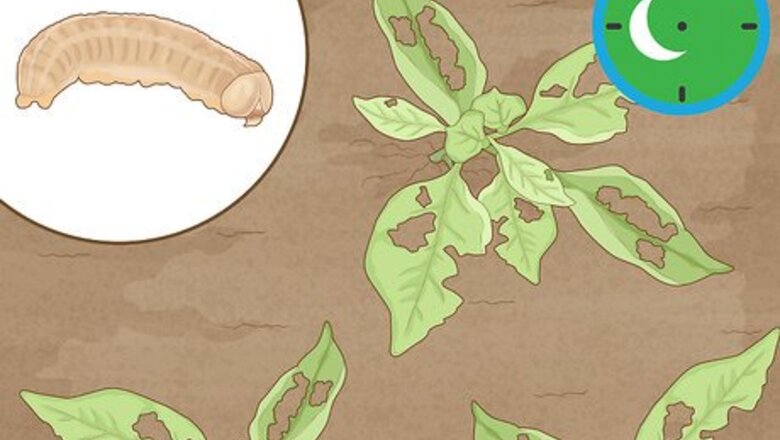
views
Checking for Telltale Signs of Cutworms
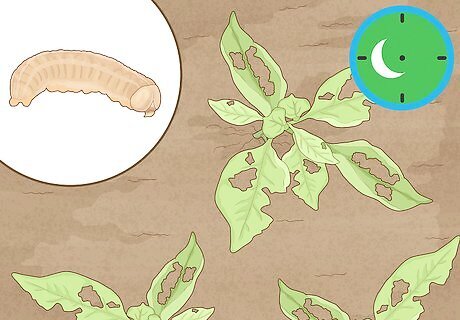
Examine your plants in the morning while the damage is fresh. Cutworms tend to be active overnight. If you check on your plants first thing in the morning, you’ll find it easier to spot the freshly chewed stems. Cutworms especially like young plants, so keep an eye on your seedlings or recent transplants in particular.

Look for plants that are cut off at the base. Most species of cutworms feed from the ground, where they mow down plants by chewing through their stems. In some cases, they will attack the roots and cut down the plant below the soil level. Check for toppled plants that have been cut of at or near the bottom. Some species of cutworms will also crawl up into the plant and damage leaves and stems near the top, especially during the summer months.
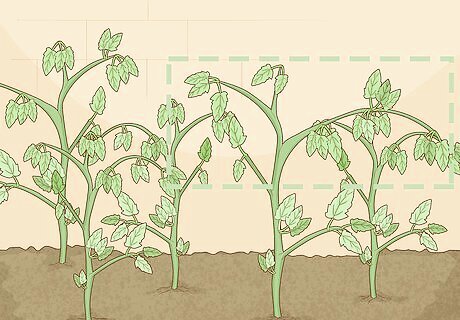
Check for plants that are wilted at the tops. If a cutworm doesn’t manage to chew all the way through the bottom of a plant, the top may still wither and die. If you notice a wilted plant, check the base of the stem for cuts or notches.Did you know? Cutworms primarily attack food crops, such as cabbages, lettuce, corn, beans, peas, carrots, potatoes, and tomatoes. Some also eat grass.
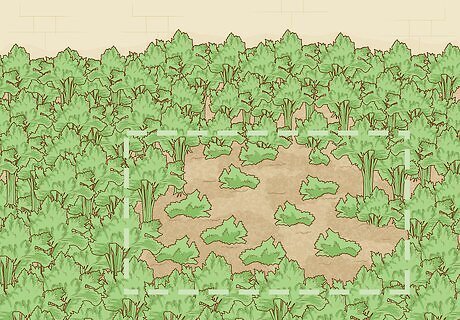
Try to spot bare patches in heavily planted areas. Sometimes cutworms will mow down a large swath of young plants, leaving a bare spot. If you have a densely planted area, such as a field with some type of crop growing in it, look out for bald patches. These may indicate a cutworm infestation. These bare patches are most likely to show up on hilltops and south-facing slopes. If you do see bare patches, closely examine the surrounding plants. Look for plants that are cut off at the stem or have notches chewed into them.
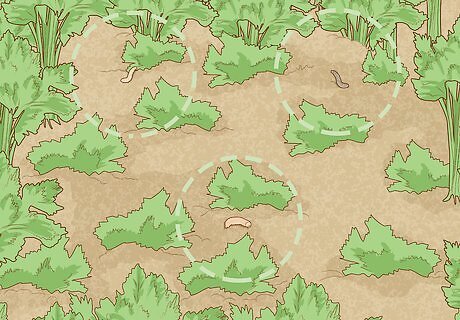
Keep an eye out for cutworm droppings. If you notice damage that you suspect was caused by cutworms, inspect the ground surrounding the damaged plants. Look for tiny, pellet-shaped black droppings. You might also spot some of them on the leaves if the cutworms have crawled up higher onto the plant. These droppings can help you distinguish cutworm damage from slug damage. Slug droppings are sludgy, slimy, and S-shaped.
Finding Cutworms in Your Garden
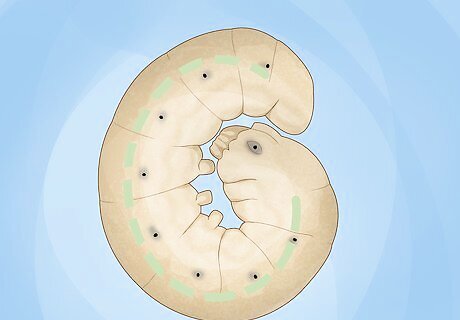
Look for caterpillars that curl up into a “C” shape. There are several species of cutworms, but one of their common characteristics is that they curl up when they’re disturbed. Check for fairly plain, grubby-looking caterpillars that roll up into a “C” or a tight circle.Keep in mind: Cutworms do most of their damage while they’re still small, around 0.5–0.7 inches (13–18 mm). By the time they reach a length of about 1.2–1.4 inches (3.0–3.6 cm), they won’t pose as much of a threat to your garden or crops. Cutworms may be brown, grey, black, tan, green, white, or pinkish in color. Some have stripes along their bodies.
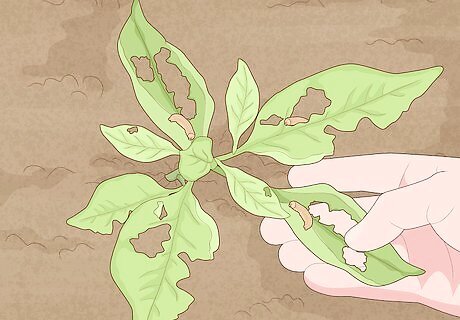
Search for cutworms in the late afternoon or evening. If you think you have cutworms, the best way to be sure is to find the worms themselves. Cutworms do most of their feeding late in the day or during the night, so you may be able to catch them in action if you check during those times. You may find the cutworms on the ground at the base of the plant or munching on leaves and stems higher up.
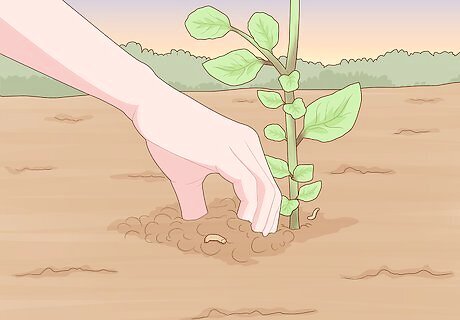
Run your hand or a trowel over the soil to uncover cutworms. Cutworms like to hide in the dirt or under plant litter when they’re not actively chewing on plants. If you see possible cutworm damage, use your hand or a trowel to turn over the soil and any loose clumps of dirt or debris around the damaged plants. This should help you turn up any cutworms. Check in a 1 foot (30 cm) radius around the damaged plant. Cutworms can sometimes hide fairly deep in the soil. The more mature larvae of some species may dig down 3–4 inches (7.6–10.2 cm) under the dirt.
Controlling Cutworms
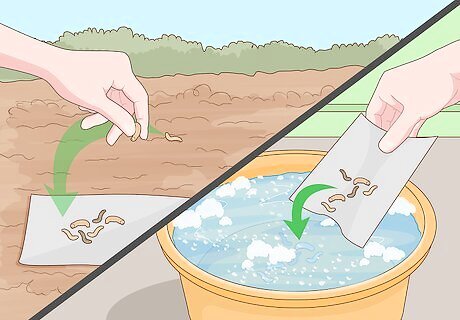
Remove any cutworms you find by hand. In smaller gardens, it’s not usually necessary to use pesticides to control cutworms. One of the simplest ways to deal with cutworms is to gather up any worms you see and squash them or dump them in a bucket of soapy water. While cutworms aren’t dangerous to handle, wearing gloves may make this task a little more pleasant.
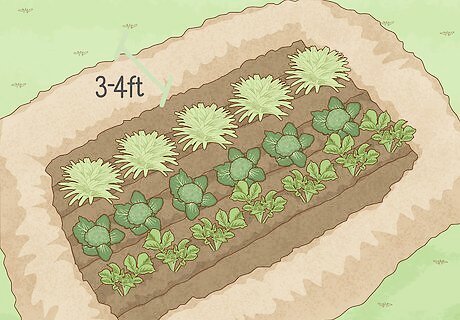
Create a dry soil buffer around your garden to discourage cutworms. Cutworms thrive in moist spoil that is rich in plant material. To discourage cutworms from moving into your garden, surround the planted area with a more dry and uninviting soil material, such as sand or succulent soil. Create a buffer that’s about 3–4 feet (0.91–1.22 m) across around the border of your garden.

Keep your garden tidy to remove hiding and egg-laying places. Adult cutworm moths like to lay their eggs in leaf litter and other plant waste, and the young larvae enjoy munching on common garden weeds. You can discourage cutworms from invading your garden by cleaning up areas where eggs and young tend to gather. Clean up leaf litter, grass clippings, and other garden waste. Weed your garden regularly. Avoid fertilizing your garden with green manure, which is attractive to egg-laying adult cutworm moths. Instead, use compost. Till the soil in your garden both at the end of the growing season and before you start planting to destroy any larvae or pupae in the dirt.
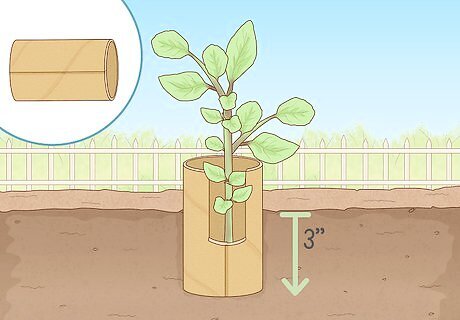
Protect individual plant stems with cardboard shields. If you don’t have a huge number of plants to protect, one effective strategy is to put a “collar” around the stem of each plant. Take a cardboard tube (such as a toilet paper tube) and place it around the base of the plant with the bottom end pushed about 3 inches (7.6 cm) under the soil. You may need to cut a slit along one side of the cardboard tube so you can easily get it around the stem of the plant. Plastic or aluminum foil shields will also work.
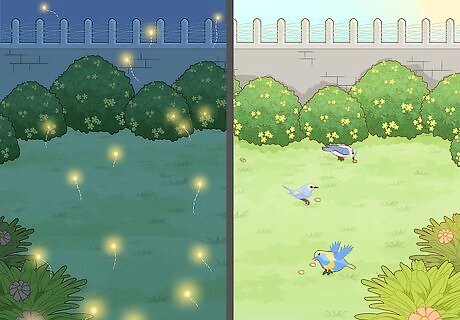
Attract cutworm predators to your garden. One way to keep cutworms at bay is to invite in animals that eat them. 2 of the major cutworm predators are birds and fireflies, so try some strategies to make your garden friendly to these creatures: Make your garden a firefly paradise by planting low shrubs and trees and cultivating some tall ornamental grasses. They also like bird baths, so put at least one in an area where fireflies like to gather. Attract birds by putting out bird feeders, bird baths, and nest boxes. They also enjoy hanging out in native trees (especially fruit trees), shrubs, and flowering plants, so plant some of those around your garden.
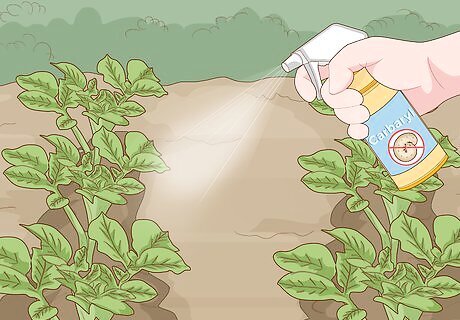
Try using pesticides for larger crops or severe infestations. If you’re trying to protect a large food crop from a cutworm infestation, you may have to take more drastic measures. Consider using a pesticide such as carbaryl, cyfluthrin, or permethrin.Tip: One relatively gentle natural pesticide is diatomaceous earth. This powdery substance is not toxic, but it kills insects by drying out and damaging their exoskeletons. Try sprinkling some around the bases of your plants to kill any cutworms that come near. For the best results, apply any pesticides in the late afternoon, when cutworms tend to start becoming active. Be aware that pesticides can also harm beneficial insects, such as butterflies. Only use this approach if you feel you absolutely have to.














Comments
0 comment